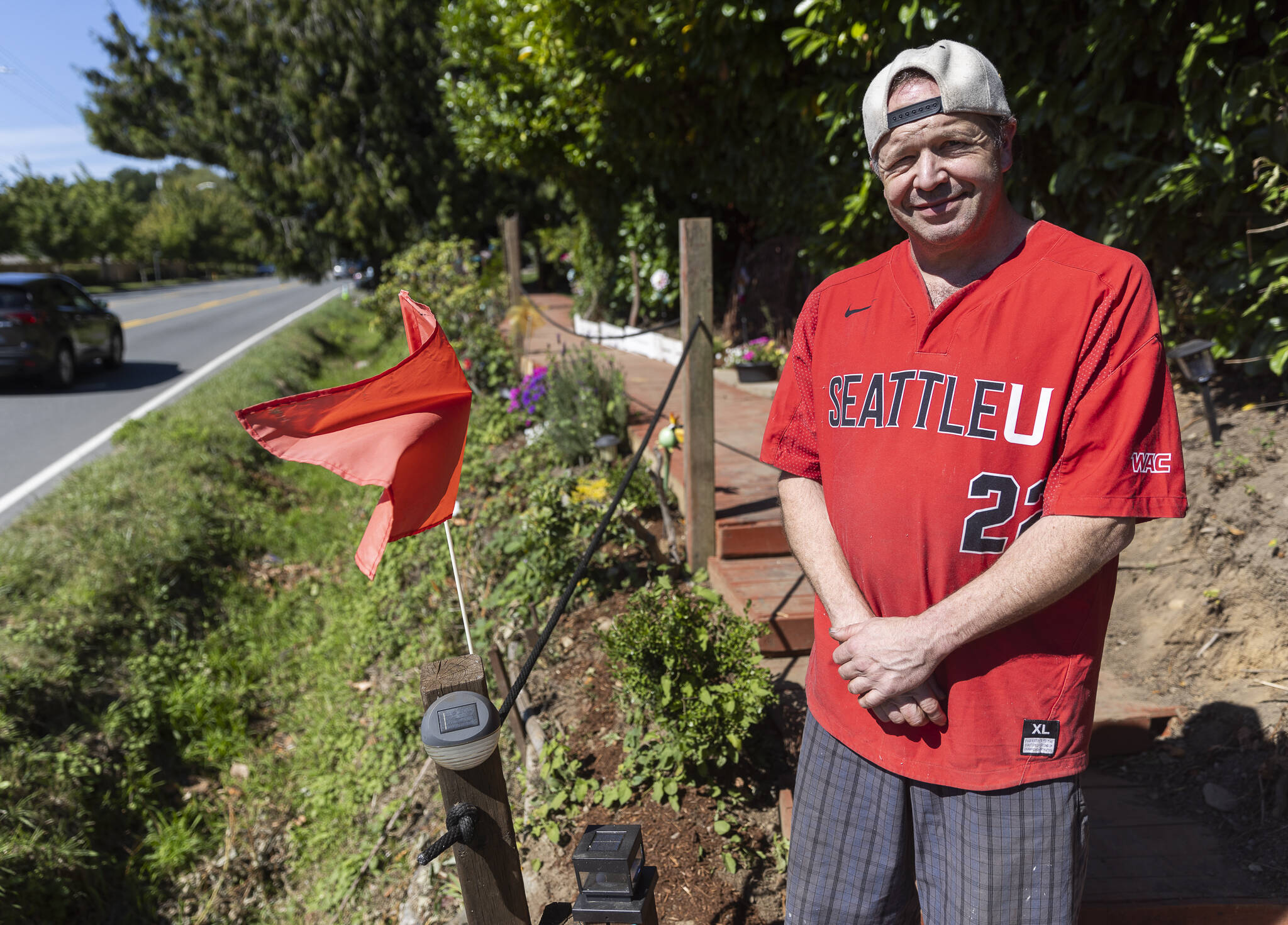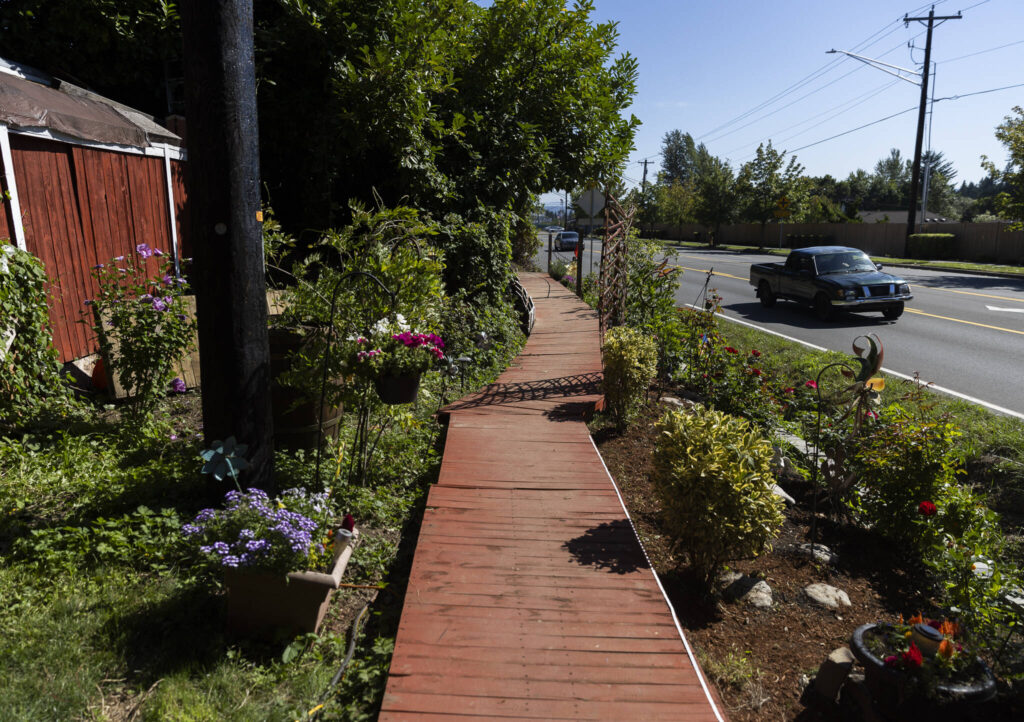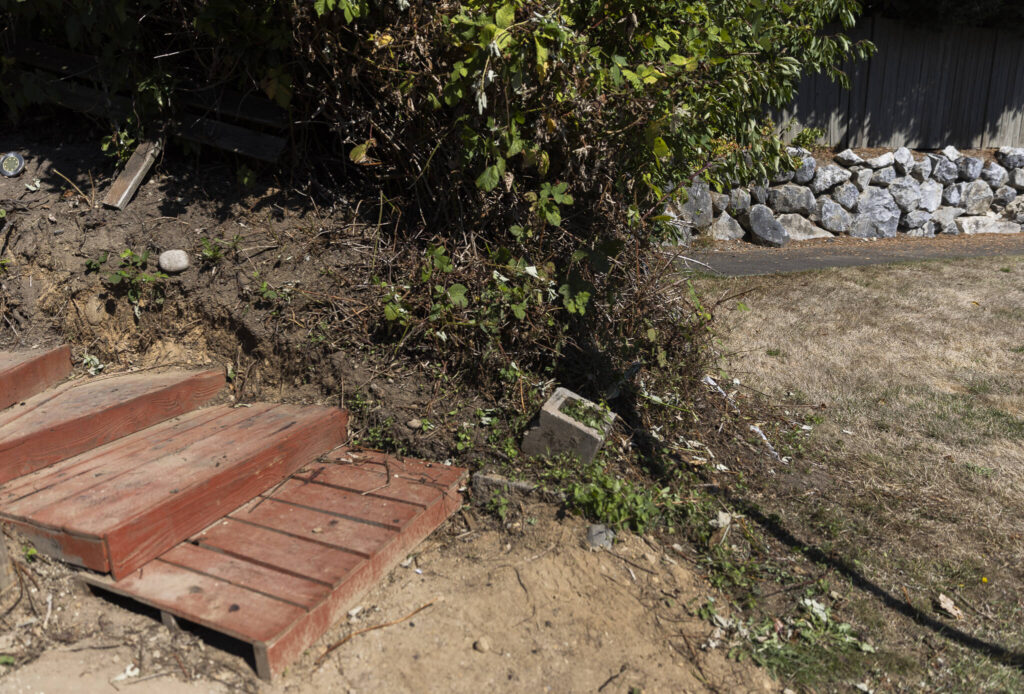SNOHOMISH — Steve Nagy spent three years working on a pathway to help pedestrians navigate past a ditch along Bickford Avenue in Snohomish.
But now, because of code violations, city officials say he has to get rid of it by the end of the month.
Nagy built the path with the goal of keeping people safe, he said Thursday. On that side of the street, a sidewalk abruptly ends, and there’s no marked crosswalk nearby to get to the other side, where there is a sidewalk.
“I put a lot of work and effort into this thing,” he said. “To have someone come along and destroy it, just because someone told them to or whatever, it doesn’t seem right. It doesn’t sit well with me.”
City officials, however, also said they had safety in mind. Federal building codes and sidewalk regulations exist to keep walkways consistently safe and accessible for pedestrians, including people with disabilities. Without being built up to code, putting in a pathway could pose a safety or liability risk.
“Imagine if everyone’s able to affect that right-of-way and there is no standard. If whatever is being placed in the right-of-way doesn’t hold up or someone gets hurt, then it creates a liability for everyone, including taxpayers,” said Cedric Atkins, a code enforcement official for Snohomish.
At first, Nagy built a dirt path above the ditch. Then, he recently added a wooden pathway made from recycled pallets. Along the path, he planted flowers and added decorations, benches, a fountain and lighting. It stretches about 150 feet along Bickford Avenue, a busy street with little pedestrian infrastructure. He’s seen as many as 20 people use it in a day.
“I was going to put it on Facebook and have this grand opening thing, ‘The walkway’s open,’” Nagy said. “Now the walkway’s closed,” he said.
The city has put efforts toward improving pedestrian infrastructure in recent years. In 2024, it approved a “Complete Streets” policy that outlines best practices for building pedestrian paths and prioritizes improvements in higher-need areas.
In 2023, the city also released an ADA transition plan, which listed some of the highest priority improvements needed to bring pedestrian infrastructure into compliance with federal laws protecting individuals with disabilities.
That report didn’t evaluate the need for new sidewalks in areas without any. But it showed the area of Bickford Avenue where Nagy built his path had lower demand for sidewalk use because there are few nearby destinations — schools, parks, public buildings or business centers — in the area.
“There are some areas of the city that may never have sidewalk, just based on how they’re structured,” Snohomish City Administrator Heather Thomas said Thursday. “That’s where we’d look at, perhaps one side of the street could have a sidewalk. There’s different options in the state design standard, so not all of them are a full curb, gutter sidewalk. Some of them are trails, improved shoulders or different options like that.”
The city can work with property owners or use opportunities like other capital improvements along streets to build improved pedestrian infrastructure, Thomas said. Homeowners are allowed to build their own sidewalks, but they must go through a permit process with the city and build the sidewalks up to engineering and accessibility standards.
Nagy plans to remove the path soon, as the situation is “pretty cut and dry,” he said.
He said he hopes the city will allow him to keep the dirt pathway he had originally constructed without any of the obstructions currently in place.
“We appreciate the creativity and the ingenuity that the property owner tried in getting people through, but we need to make sure it’s done in a safe and legal manner,” Thomas said.
Will Geschke: 425-339-3443; william.geschke@heraldnet.com; X: @willgeschke.
Talk to us
> Give us your news tips.
> Send us a letter to the editor.
> More Herald contact information.




























